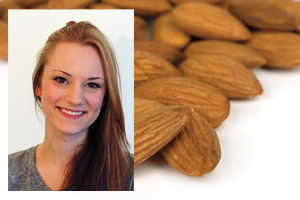Health Nut: 4 Keys to Control Your Metabolism

By Kelly Turner
People like to blame their metabolism for their weight, but guess what? That excuse doesn’t fly, because aside for a very few serious thyroid conditions, you have complete control over your metabolism. (And for those of you diagnosed with said thyroid disorders, you still have control, you just have to work harder to get it to listen to you.)
To over-simplify, your metabolism is the rate at which your body uses calories for fuel. Your body burns calories to perform every single function in the body.
You burn calories to digest food, grow, breathe, think, blink and all of these processes require fuel. Even if you lay like a blob on the floor for a full 24 hours, your body will burn calories due to your Basal Metabolic Rate (BMR). Your BMR is the amount of calories it takes just to keep you alive. Any activity from there is bonus calorie burn.
A high metabolism will burn a lot of calories doing very little work. A low, or slow metabolism, will burn calories at a lower rate. The goal is to have your body burning as many calories as possible, even at rest, and here’s how you can make that happen.
Build muscle. Muscle burns more calories than fat, so the more muscle you have on your body, the higher your metabolism. Incorporate strength training into your weekly routine to burn more calories and build a sleeker, leaner frame.
Cut the cardio. As with most things, when it comes to cardio, it’s quality over quantity. Don’t waste your time walking on the treadmill for an hour. Slash it to a fraction of the time and boost your metabolism by utilizing high-intensity interval training (HIIT).
HIIT alternates bouts of high-intensity cardio with relatively lower-intensity rest intervals. This type of training blasts the same amount of calories in less time, and research shows you burn calories at a higher rate well after you are done with your workout.
Eat enough, but not too much—and eat often. Think of your metabolism like the furnace of a train. Like a furnace, your metabolism burns calories to fuel your equally powerful body.
Under-fueling, or eating too little, has a negative impact. Our bodies are made for survival, so when we eat too few calories it slows down its processes to conserve energy. Even if your energy feels fine, if you eat too little, your metabolism may be running at half speed.
Conversely, if you eat too much, it’s like dumping a huge pile of coal into the furnace, and you’ll smother that fire, storing the extra calories as fat. Feed a steady supply of high quality fuel to your furnace for highest efficiency.
Eating every 2–3 hours will keep your metabolism performing at its peak, but to avoid overeating, you’ll need to redefine your idea of a meal. Make sure you eat 5 – 6 small, 300-calorie meals full of high quality carbs, protein, fruits and veggies for necessary nutrients.
Get plenty of sleep. When you don’t get enough sleep, your body releases the stress hormone Cortisol which increases your appetite and can cause you to overeat. Add to that the fact that lack of sleep causes your body to have difficulty metabolizing carbohydrates, which leads to a spike in blood sugar, which causes an increase in insulin, which signals the body to store any excess calories as fat and you have a chain reaction that can stall results. Whew! Aim for 7– 8 hours of sleep per night to avoid this mess of out-of-whack hormones.
Don’t blame your body, work with it. Take back your control, and get your metabolism running faster than a speeding locomotive!
Kelly Turner is a Seattle-based ACE certified personal trainer and fitness writer. You can contact her at KellyTurnerFitness@gmail.com. Twitter: @KellyTurnerFit Instagram: KellyTurner26
If you like this post, you might also enjoy:
Trackbacks For This Post
4 Comments
-
[...] towel to dry down and use artificial clothing that wicks away moisture. Cycling – this task could burn calories for at the least 236 -1489 with regards to the velocity and kilometers obtained for one hour of [...]
-
[...] result of the activity burns calories, too. Sure, anaerobic exercise results in increased toughness, but among the other advantages is [...]
-
Well established among elite athletes that frequent short high intensity intervals lead to fatigue and burnout. Better to space them out and work up to fewer longer internvals, with longer slower workouts and strength sessions in between. For example, 60-75 minutes on the treadmill at one’s good walking/hiking speed and 2-4% incline, with a couple of several minute jogs tossed in, including 60 seconds at interval speed, does wonders for building one’s endurance and ability to handle intervals. Add a few hour hike (or long bike ride once a week), preferably with poles, and one’s metabolism will take care of weight issues, assuming reasonable discipline.
-
Hey Roger. Thanks for this awesome comment/info!
-




[...] towel to dry down and use artificial clothing that wicks away moisture. Cycling – this task could burn calories for at the least 236 -1489 with regards to the velocity and kilometers obtained for one hour of [...]
[...] result of the activity burns calories, too. Sure, anaerobic exercise results in increased toughness, but among the other advantages is [...]